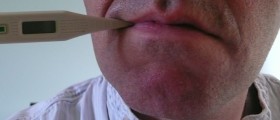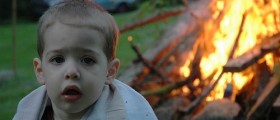
Dry drowning is a rather serious medical condition and must not be ignored. Parents and other people are supposed to be familiar with symptoms and what to do if dry drowning occurs. It usually affects small children and is caused by involuntary contractions of the vocal cords due to irritation by water or any other fluid.
In the presence of water or other fluids the vocal cords contract and try to prevent further entrance of the fluid. This leads to temporary cut off in a supply to the lungs with oxygen. This process of laryngeal constriction may cause death if it lasts long enough since the larynx is closed and the air cannot reach the lungs. Dry drowning occurs for 1 to 24 hours after the child has been exposed to water.
The term 'dry drowning' refers to an inability of the lungs to be properly supplied with oxygen. In dry drowning, the water never enters the lungs. Instead, water causes your child's vocal cords to close up and shut off her airways, preventing or making your child hard to breathe.
In some cases, the drowning is called dry since water or other fluids accidentally enter the lungs usually due to unintentional inhaling. In infants and little children, dry drowning may be caused by excessive water drinking which accidentally slurps into the lungs and can also be a consequence of muscular paralysis. Swimming in pools, rivers, and lakes may be another cause of accidental entrance of the water.
Symptoms of Dry DrowningThe symptoms of dry drowning must not be ignored and neglected. They do occur right after the accident and they typically include:
chronic coughing, the abruptness of breath, chest pain, and finally, confusion, tiredness, and sluggishness.If the cough lasts more than 20 or 30 minutes it is highly likely that some of the water has entered the lungs. Furthermore, trouble with breathing is also a significant sign and if it lasts for a longer period of time the child needs to be transferred to the hospital.
In some cases children are confused, may not be able to realize verbal instruction or even cannot express their thoughts. The previously mentioned is definitely related to dry drowning.
And finally, two additional symptoms include vomiting and involuntary laxation.
Treatment for Dry DrowningIf dry drowning has occurred, the child needs to be transferred to the hospital as soon as possible. The water or fluids are removed from the lungs and the child is administered oxygen with the assistance of a ventilator or respirator. Mouth to mouth ventilation may be needed until the child reaches a hospital. The child is supposed to be in a supine position, lying face upwards and slightly to the side to allow any water to drain from his or her mouth and nose.
The best way to prevent dry drowning is to carefully supervise children when they are swimming and not allow them to drink fluids quickly. While swimming children are supposed to wear proper swimming equipment such as nose plugs.
The doctor will check the child's vital signs, oxygen level, and work of breathing:
If your child has more mild symptoms, he will be observed in the hospital for a few hours. If your child shows serious signs, he might need a chest x-ray or a doctor might give him oxygen. If your child can't breathe or is having serious difficulties breathing, she will need breathing support, and will be probably intubated or put on a ventilator to goal will be to increase blood flow in the lungs and get the child breathing well again.


-And-Breathing-Problems_f_280x120.jpg)













Your thoughts on this
Loading...